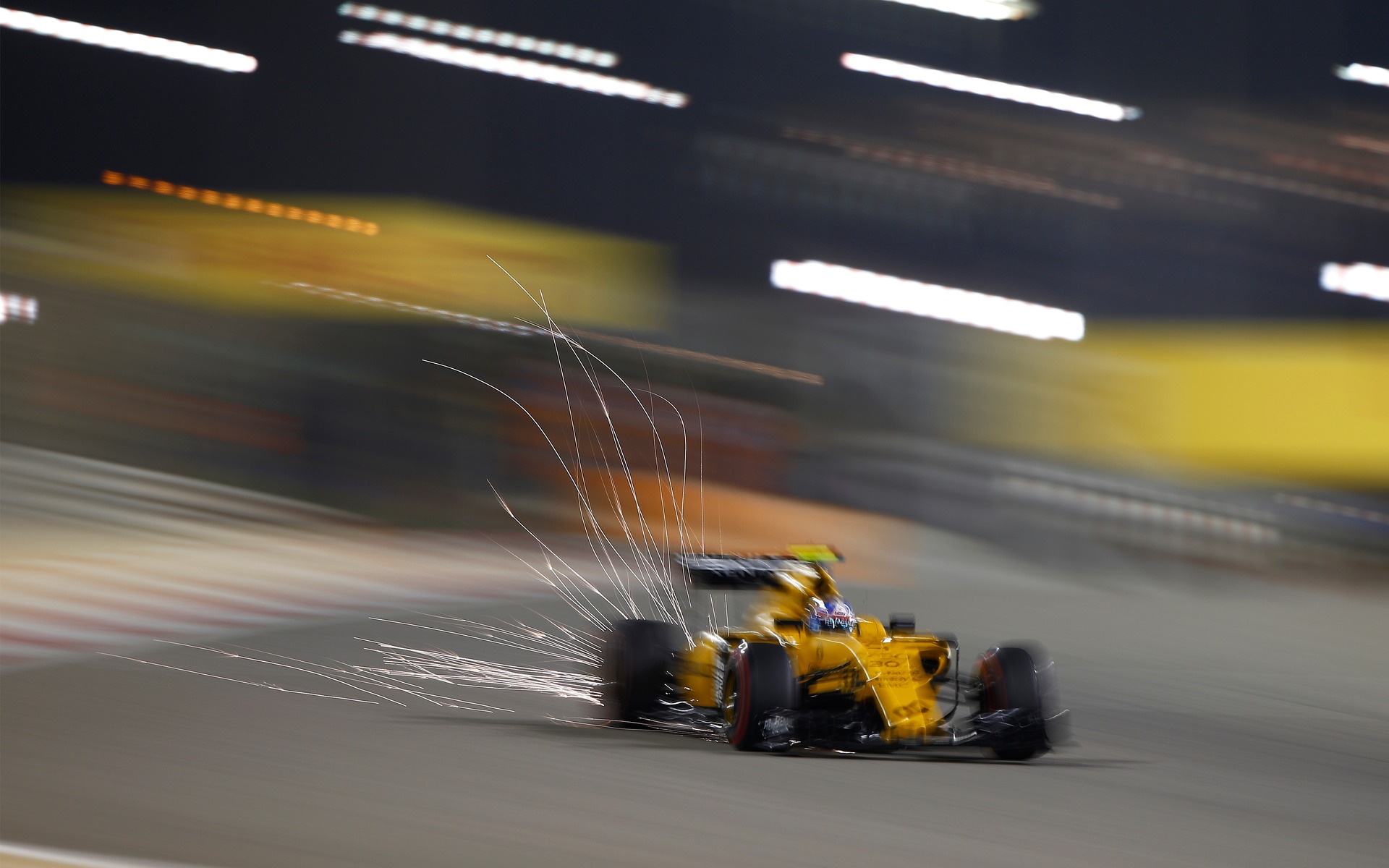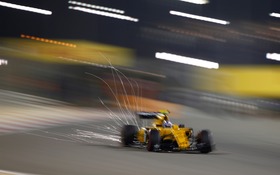Infiniti All About Performance in F1
MONZA (Italy) – Although once upon a time it was a simple sponsor of the Red Bull team in F1, Infiniti is now a “technical partner” of Renault’s F1 team since the brand with the diamond-shaped logo acquired the Lotus team and joined the Formula One ranks, not only as an engine designer, but now as a bona fide team just like Mercedes-AMG, Ferrari, and the others.
For the Italian Grand Prix in Monza, the words “Infiniti Performance Hybrid” were inscribed on the hood of the F1 Renault RS16s, in place of the usual “Infiniti.” This change to the outward appearance of the cars aims to more directly underscore the contribution of the Renault-Nissan alliance’s luxury brand to the concerted effort made to help it come back to the F1 circuit.
- Also: 2016 Infiniti Q50 Hybrid: Delving into the Unknown
- Also: Infiniti Engineering Academy: Matthew Crossan wins the 2017 edition in Canada
Infiniti Performance Hybrid
Infiniti’s contribution is twofold. First, their engineers work with those of Renault Sport F1 on the design and development of the Energy Recovery System (ERS). It recovers kinetic energy stored up from braking as well as thermal energy generated by the heat from the engine to redeploy it during acceleration, assisting the combustion engine. It’s part of the one-seater’s engine, now known as Power Unit, to reflect the fact that the F1’s drivetrain is made up of a 1.6-litre V6 combustion engine and the ERS.

MGU-K and MGU-H
The MGU-K (Motor Generator Unit–Kinetic), directly linked to the combustion engine’s crankshaft, acts as a generator by recovering the kinetic energy released during braking to then convert it to electricity, which is stored in the battery. The MGU-H (Motor Generator Unit-Heat), which is directly linked to the turbocharger, also acts as a generator by recovering the heat from the exhaust gas to convert it to electric energy that will be stored in the battery as well.
What’s more, since the MGU-H is directly linked to the turbocharger, it also serves to increase the turbo’s rotation speed, which can reach 100,000 rpm more quickly to reduce response time, or “turbo lag”, when you press the accelerator. All of the electric energy recovered by these two very complex systems can be deployed during acceleration. The ERS’s contribution is limited to 120 kilowatts or 160 horsepower, according to F1’s technical rules, which means that the total horsepower of the Renault F1’s Power Unit is 875.
It used to be that Renault Sport only designed and developed the combustion engine, leaving the task of developing the ERS to and external supplier. The always higher level of competition in F1, however, convinced Renault Sport of the importance of developing the whole Power Unit, and not simply the combustion engine, internally, and to work in partnership with Infiniti.
The Renault-Nissan alliance’s luxury brand acquired a certain expertise in hybrid drivetrains with models like the Q50 Hybrid and Q70 Hybrid. That also helped Infiniti appear on the F1 race cars with more credibility than before and to benefit from publicity from this investment in resources and technology.
Infiniti Performance Academy
Secondly, Infiniti launched a big contest to recruit young engineers with the aim of offering them a six-month internship with Renault’s F1 team and six months at Infiniti. Known as Infiniti Performance Academy, this contest saw seven winners, including Quebec’s own Félix Lamy, earn this coveted internship in 2016, ahead of more than 4,000 other candidates who registered via a website dedicated to international recruitment.
At the Italian Grand Prix, I met Daniel Sanham, an Englishman who had just finished his internship. He was returning to university to complete his studies with the knowledge that there would be a job waiting for him with Renault’s F1 team. According to Tomasso Volpe, director of Infiniti Motorsport, this program’s success has surpassed expectations significantly and has helped attract young, very talented engineers, some of whom were even poached from rival stables.
Ambitious goals
For Renault Sport and Infiniti, the performance goals in F1 are as clear as they are ambitious. The team wants to compete for a place in the top three within the next three years and compete for the world championship within five years, according to Jérôme Stoll, director of Renault Sport. In Monza, the team’s cars qualified in 20th and 21st place. Jolyon Palmer was forced to drop out of the race after seven laps and Kevin Magnussen finished 17th, one lap behind the winner, Nico Rosberg of Mercedes-AMG.
In short, the challenge is huge. Jérôme Stoll explains that “success is F1 rests on three pillars: engine, chassis and drivers. We know that our engine is efficient, perhaps less so than that of Mercedes, but the Red Bull stable is able to reach the podium with some regularity with our engine. We have to work on the chassis. In this area, we lag behind, in part due to our late decision to acquire the Lotus team and to re-organize it. As for the drivers, they know perfectly well that F1 is dog-eat-dog world and that they have to deliver the goods if they want to keep their spot.”












